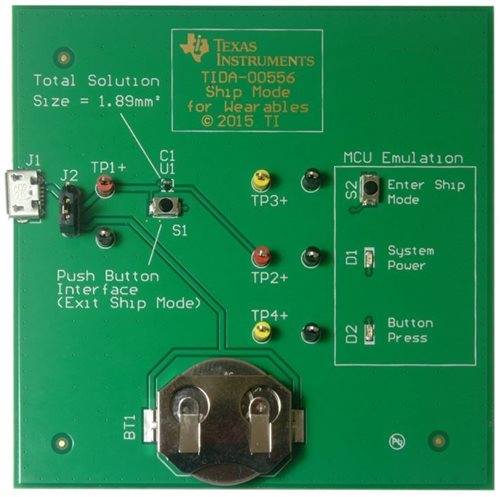Don’t let your battery drain on the shelf – use ship mode
You’ve done it; your battery-powered design is complete: a new wearable for the consumer electronics market. You’re excited, and you want your consumers to feel that same excitement when they open the box and turn the device on. But how do you make sure that happens? A Christmas present bought in advance can be sitting in wrapping paper for four weeks or more. The last thing you want is for the recipient to find that the battery is dead and spend their first moments with the product waiting for it to charge. But you can ensure a better customer experience by implementing ship mode.
The ship-mode circuit is a circuit which utilizes several components to prolong battery life during electronics shipment and provide customers with a consistent out-of-the-box experience. Ship mode electronically disconnects the battery from the rest of the system to minimize power drain while the product is idle. When the consumer turns the product on for the first time, the battery connects to the rest of the system and stays connected until the system decides to put itself back into ship mode.
Figure 1a shows the behavior of the circuit when in ship mode; Figure 1b shows the circuit out of ship mode.
Figure 1: Ship-mode circuit behavior: ship mode (a); out-of-ship mode (b)
So what does a ship-mode circuit look like? It needs to be noninvasive to the rest of the design, so the smaller the better. The leakage from the battery to the rest of the system needs to be minimized to prolong battery life. With these things in mind, consider the solution in Figure 2.
Figure 2: Ship-mode circuit using the TPS22916B load switch
The TPS22916B load switch goes between the battery and the system. When the circuit is put into ship mode, the load switch disables and disconnects the battery from the system. Pressing a button on the product causes it to exit ship mode and turn the system on. The load switch is enabled, connecting the battery to the system. Keeping the button depressed keeps the load switch on and the battery stays connected. Pressing a button after the system has exited ship mode provides a signal that the rest of the system can read. This is an advantage for applications with only one button, since that button can both exit ship mode and control the system afterwards.
When in ship mode, the battery is disconnected from the rest of the system. There is a small amount of leakage current caused by the ship-mode circuit, which depends on the load switch you use. When disabled, the TPS22916B has only 10nA of leakage current flowing into the VIN pin. This is the only drain on the battery when the system is in ship mode. With the ship-mode circuit, a fully charged 100mAh battery will still be at about a 99.8% battery charge after two years.
To validate this solution, the Load Switch Based Ship Mode Reference Design for Wearables implements the ship-mode circuit in a 1.89mm2 area and verifies the low leakage current of 10nA. See Figure 3.
Figure 3: Load switch-based ship-mode reference design for wearables
After a year of this reference design board sitting on my desk, the CR2032 battery is still able to power the board. Isn’t it time to let your design do the same? Download this ship mode reference design today to implement ship mode and prevent your battery from draining.
Additional resources
- Download the following application notes:
- Watch the video, “How and why to replace discrete MOSFETs with load switches.”
- Read the following load switch technical articles:


